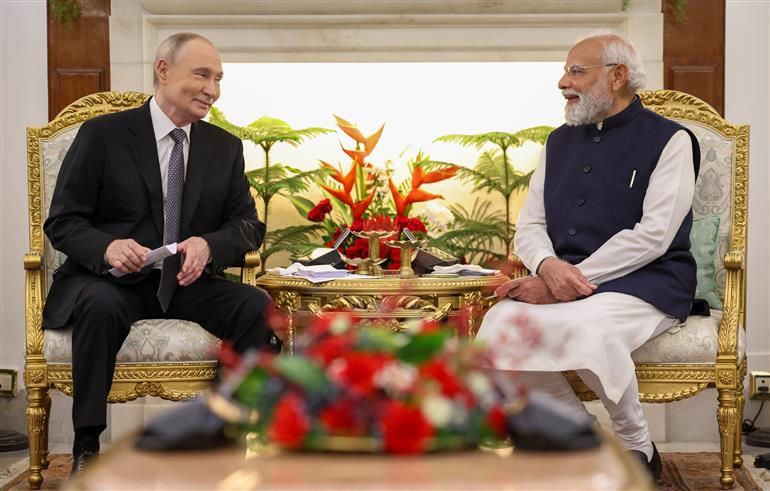China's Military Strategy: It's not the LAC!
- rkbhonsle
- Apr 17, 2022
- 4 min read

Much of the debate on China's incursions across the perceived and mutually agreed upon but not accepted Line of Actual Control (LAC) is on the People's Liberation Army (PLA) aim of establishing claims made in 1959.
While China and India have inked a series of essential agreements to maintain peace and tranquility on the Indo China border including Ladakh and the Eastern Sector, the Indian Army (IA) rightly believed that the PLA will comply but in hindsight this appears misplaced.
Wargaming the Past: CMC
While this is amounting to speculation but wargaming the past, China's Central Military Commission (CMC) in Beijing headed by the Chairman who is also the President and General Secretary of the Chinese Communist Party Xi Jinping was possibly examining recent developments in Jammu and Kashmir post-2019.
The change in special status of Jammu and Kashmir and bifurcation of the State into two separate Union Territories (UT) through repealing of Articles 370 and 35 A by the Indian parliament were seen by India as an internal issue, however possibly the CMC assessment was a willingness in India to change the status quo politically.
This within the larger ambit of declaration of the Indian Parliament of reclaiming the whole of State of Jammu and Kashmir may have set the alarm bells ringing.
For as late as on 11 March 2020, Minister of State Ministry Of External Affairs, Shri V. Muraleedharan in reply to Question No 2977 in parliament stated, “Government’s consistent and principled position, as also enunciated in the Parliament resolution adopted unanimously by both Houses on 22 February 1994, is that the entire Union Territories of Jammu & Kashmir and Ladakh have been, are and shall be an integral part of India”.
In the second part of the reply Ministry of External Affairs seems to have made a nuanced differential with respect to Pakistan and China possibly as the question referred to only Pakistan Occupied Kashmir (POK).
The MEA replied, “Government monitors all developments taking place in the territories of India including in territories that are under illegal and forcible occupation of Pakistan. We have consistently called upon Pakistan to immediately vacate all areas under its illegal and forcible occupation, and to put an end to the human rights violations and desist from continued attempts to bring material change in these territories”.
What the CMC interpreted this is obviously not known but considering the possibility of undertaking preemptive defensive measures with a view to secure Aksai Chin cannot be ruled out.
India’s Infrastructure Advantage
Secondly concomitant military developments of infrastructure expansion which have received a significant boost in the last few years connecting Daulat Beg Oldi (DBO) with an all-weather road axis Durbuk Shyok DBO possibly implied to the Chinese India's ability to induct and concentrate a large quantum of force on this axis which is at the base of the Karakoram Pass.
In addition the ability to concentrate forces in the Galwan Valley in the Chang Chenmo Sector which as Lt Gen H S Panag highlights in an article in the Print is the gateway to the southern approaches to Aksai Chin is possibly leading the PLA to deny construction of roads to PP17 and PP 15 denotes China's sensitivity to concentration of Indian forces in this area.
Lt Gen Panag believes that China is seeking a buffer in PP 15 loosely denoted as the Hot Springs mainly to create depth by denying Indian forces access to this vital area which provides an axis to Aksai Chin. Due to this factor, India and China have failed to reach an agreement in various rounds of talks held so far.
Importantly China's designs are now apparent after two years of standoff in Eastern Ladakh, essentially to provide depth to Aksai Chin in the crucial areas of Galwan and DBO.
While China has conceded to pull back from the North of Pangong Tso in February last year as a quid pro quo for India vacating the Kailash Range which dominated Moldo and G 219 the Xinjiang Tibet highway, the PLA has by creating a bridge over the lake succeeding in establishing interior lines of communication for reinforcement and resupply thereby eliminating the sectoral weakness.
No doubt this bridge will be highly vulnerable to Indian aerial and ground targeting, but the PLA possibly believes that movement to and fro will be feasible during low intensity operational scenarios.
China’s Active Defence Strategy
The clear enunciation of regaining national sovereignty and China Active Defence strategy combined with Chinese interpretation of developments in J & K in 2019 should have led to the perception of a change in the overall dynamics of PLA military strategy in the region primarily to deny restoration of the larger status quo by India in Eastern Ladakh.
While there has been some speculation that China's military strategy was possibly to join Eastern Ladakh and Siachen glacier area to form a joint front with Pakistan, given the nature of terrain and assessment of capabilities of the Chinese and Pakistan forces this does not appear possible in the short term.
Thus achieving depth appears to the held areas of Aksai Chin appears to be the primary objective and having done so, China at present is unlikely to relent in future negotiations either at PP 15 or Depsang Plains.
What Should India Do?
For India maintaining the façade over negotiations and seeking status quo ante as of April 2020 can only be a short-term negotiation ploy, it cannot be a larger part of India's military strategy vis a vis China.
Briefly, India should prepare to take the fight beyond the LAC howsoever operationally challenging this may be due to nature of terrain and Chinese occupation of vital ground in Eastern Ladakh.
Equally important is to prevent alteration of status quo in other sectors – Central, Sikkim and Arunachal Pradesh – particularly Kameng.



Comments